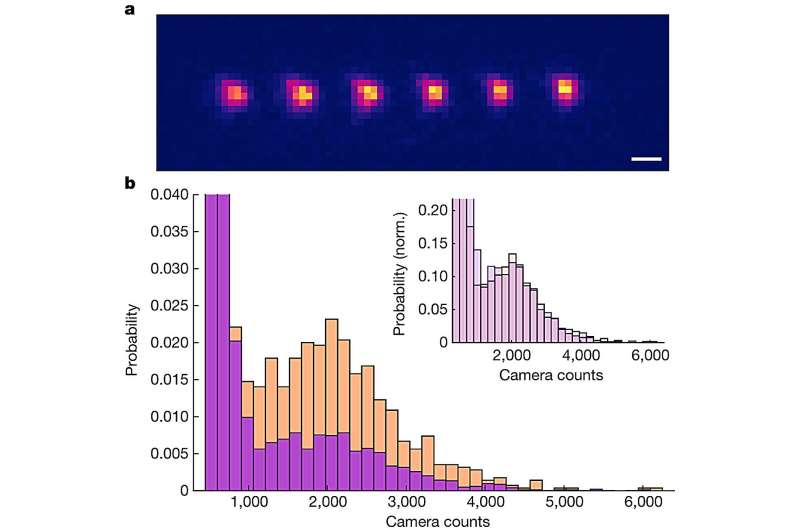May 3, 2024 report
This article has been reviewed according to Science X's editorial process and policies. Editors have highlighted the following attributes while ensuring the content's credibility:
fact-checked
peer-reviewed publication
trusted source
proofread
Physicists create an optical tweezer array of individual polyatomic molecules for the first time

A team of physicists at Harvard University has succeeded in trapping individual polyatomic molecules in optical tweezer arrays for the first time. In their paper published in the journal Nature, the group describes how they achieved their feat and the possible uses for it. A Research Briefing also describes their work in the same journal issue.
Cooling atoms to very cold temperatures has allowed for controlling their energy states, which in turn has led to the development of several types of technologies, such as atomic clocks. Physicists suspect that doing the same for molecules could offer similar results, but doing so has proved to be a formidable challenge due to extra factors involved, such as rotation and vibration.
Some success has been found in molecules with just two atoms, but those with more have been troublesome. In this new effort, the research team has found a way to control one type of molecule with three atoms—CaOH.
To control individual molecules, the researchers began by isolating several of them in a vacuum chamber chilled to just below 100 microkelvin and then using optical tweezer (laser) arrays to separate them, allowing the team to focus their efforts on a single molecule. This allowed them to manipulate the molecules into a quantum ground state.
Once that was achieved, the team devised a way to image an individual molecule, which proved that a given tweezer was loaded without destroying the molecule they were studying. Doing so involved use of additional lasers, though the team found that they had to tune them in a particular way to mitigate interference between the interactions of the laser beams and the molecule's structure.
The researchers then forced the molecule into a desired quantum state, which allowed them to control its vibration, rotation, and its nuclear spin. They then imaged the molecule once again to learn more about the outcome of their manipulations.
The research team suggests their technique could be used with other three-atom molecules, opening up new avenues of polyatomic molecular research.
More information: Nathaniel B. Vilas et al, An optical tweezer array of ultracold polyatomic molecules, Nature (2024). DOI: 10.1038/s41586-024-07199-1
Controlling single polyatomic molecules in an optical array for quantum applications, Nature (2024). DOI: 10.1038/d41586-024-01009-4
Journal information: Nature
© 2024 Science X Network




















